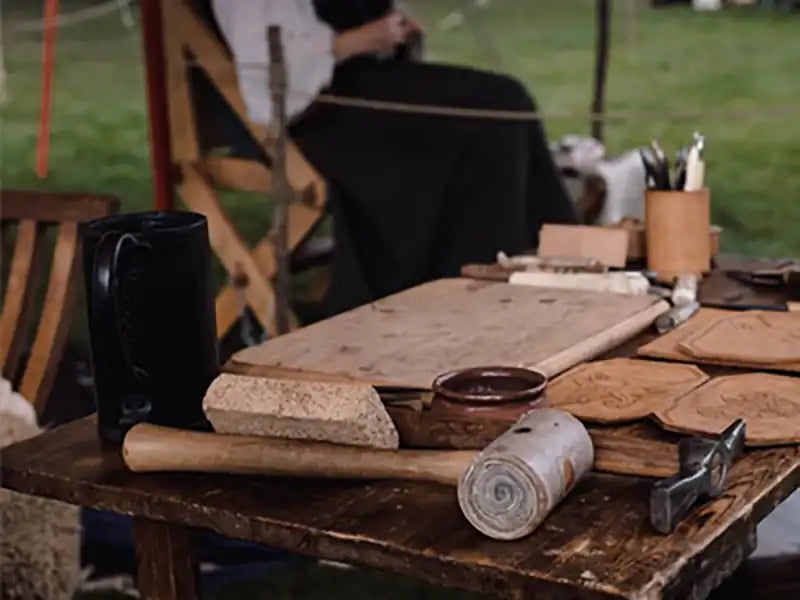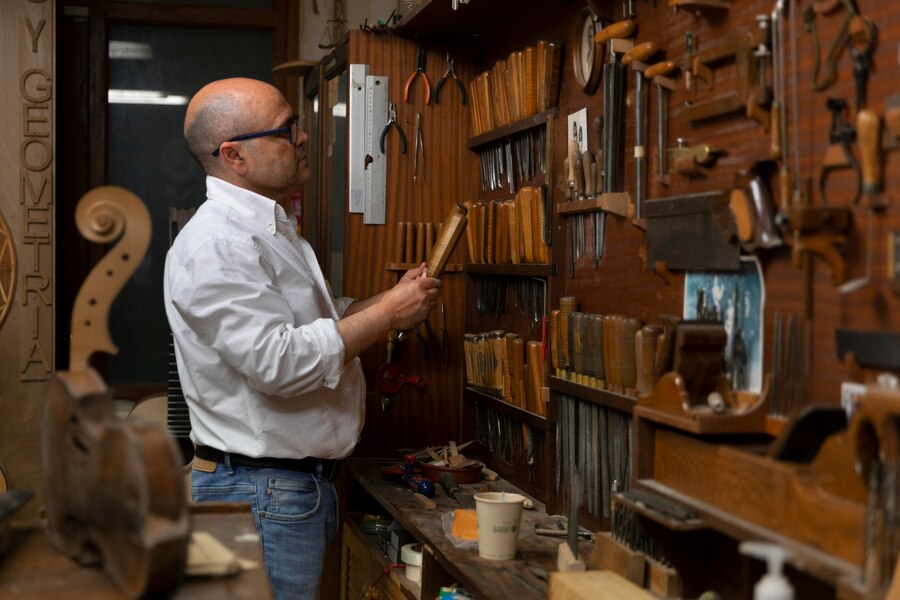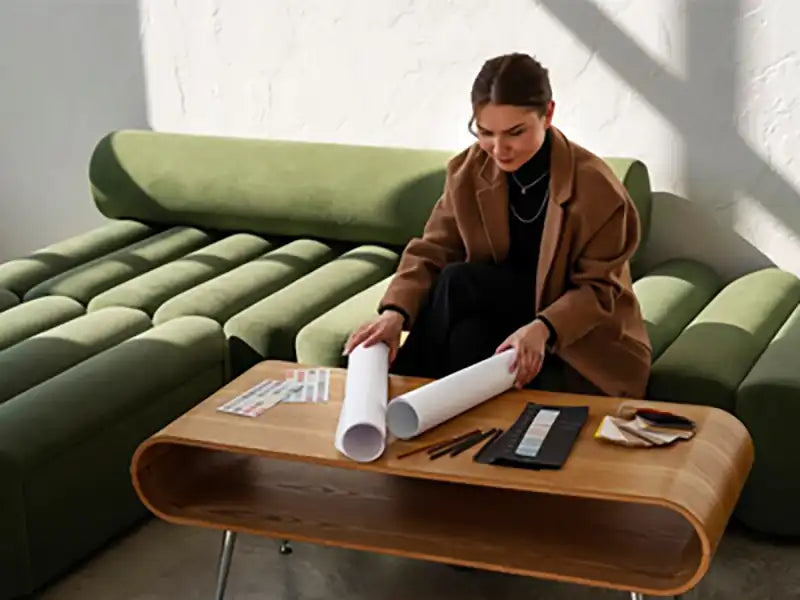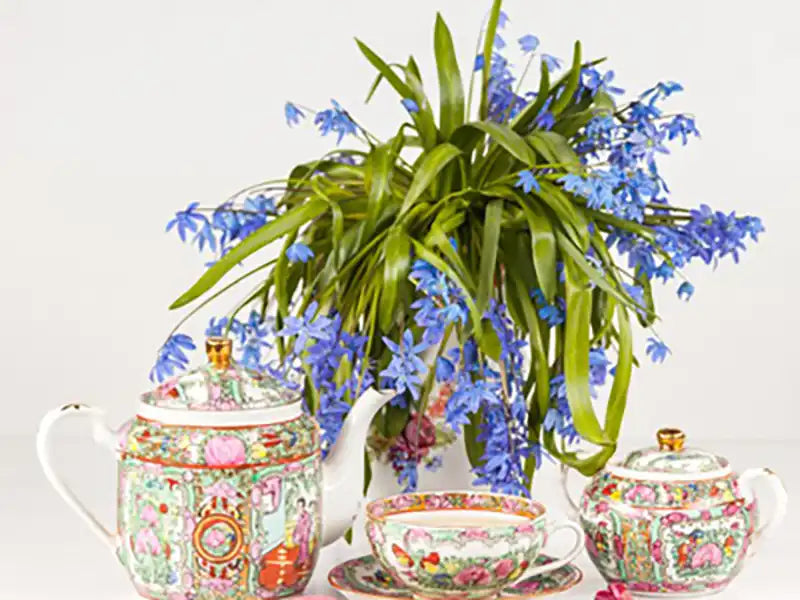Cart
0
Australia is known for its diverse and sustainable forests, providing an excellent range of timbers for furniture making. Whether you're a DIY enthusiast or a professional woodworker, selecting the right timber is crucial to crafting beautiful, long-lasting pieces. In this guide, we'll explore the various timber options available in Australia, sustainability practices, and key considerations when sourcing wood for furniture.
## 1. Types of Timber Commonly Used in Australia
Australia is home to a variety of native timbers that are prized for their durability, beauty, and versatility. Here are some popular choices:
### a. **Tasmanian Oak**
Tasmanian Oak is a widely used hardwood, known for its light-colored appearance and consistent grain. It’s highly workable and takes stains and finishes well, making it perfect for modern and contemporary furniture designs.
### b. **Jarrah**
A native Western Australian hardwood, Jarrah is distinguished by its rich, reddish-brown hue and high resistance to weathering and pests. It is a popular choice for both indoor and outdoor furniture due to its durability and strength.
### c. **Blackbutt**
Blackbutt is a versatile Australian hardwood known for its strength and light, golden-brown tone. Its natural resistance to termites makes it a popular choice for flooring and furniture alike.
### d. **Spotted Gum**
This hardwood, native to Eastern Australia, is known for its appealing wavy grain and distinctive color variations. Spotted Gum is often used in high-end furniture and outdoor settings, offering excellent durability and a striking aesthetic.
### e. **Victorian Ash**
Victorian Ash is a pale hardwood that works well with contemporary interiors. Its light tone is ideal for minimalist furniture designs, and it’s relatively easy to work with, making it a favorite for custom pieces.
## 2. Sustainability and Certification
Sustainability is an important consideration when sourcing timber in Australia. Here’s how you can ensure the wood you’re using is environmentally responsible:
### a. **FSC and PEFC Certification**
The Forest Stewardship Council (FSC) and the Programme for the Endorsement of Forest Certification (PEFC) are international bodies that ensure timber is sourced from sustainably managed forests. When buying timber, look for these certifications to ensure responsible forest management and minimal environmental impact.
### b. **Australian Sustainable Forestry Practices**
Australia has some of the world’s strictest environmental regulations when it comes to forestry. Many timber suppliers work under strict guidelines to ensure forests are managed sustainably. Always check with your supplier about their practices and certifications.
### c. **Recycled and Reclaimed Timber**
Another eco-friendly option is using recycled or reclaimed timber. This wood is sourced from old buildings, bridges, or other structures, reducing the demand for newly harvested trees and often offering a unique, weathered look that’s perfect for rustic or industrial-style furniture.
## 3. Where to Source Timber for Furniture in Australia
There are several avenues for sourcing high-quality timber in Australia, depending on your needs and budget:
### a. **Timber Merchants**
Local timber merchants often have a wide variety of species and grades available. They can also offer valuable advice on the best types of wood for your project and may even provide milling services to cut the wood to your specifications.
### b. **Sawmills**
For large projects or bulk purchases, sourcing timber directly from a sawmill can be cost-effective. Many sawmills in Australia offer locally sourced, sustainable wood, and you can often find unique, character-filled pieces.
### c. **Specialty Timber Suppliers**
If you’re looking for rare or exotic timbers, specialty suppliers may be the best option. They often stock high-grade woods that are ideal for fine furniture making, as well as harder-to-find native species.
### d. **Online Marketplaces**
Several online platforms specialize in selling timber for furniture making. Websites like Timbersearch and WoodSolutions allow you to browse a variety of timbers and connect with suppliers across Australia.
## 4. Factors to Consider When Sourcing Timber
When selecting timber for furniture, consider these important factors:
### a. **Durability**
Different timbers have varying levels of durability. Hardwoods like Jarrah, Spotted Gum, and Blackbutt are more resistant to wear and tear, making them ideal for heavy-use furniture like tables and chairs.
### b. **Aesthetic Appeal**
The appearance of the timber is crucial for the final look of the furniture. The grain pattern, color, and texture of the wood will determine the overall aesthetic. Timbers like Victorian Ash and Tasmanian Oak offer light tones that suit modern designs, while darker woods like Jarrah create a warm, traditional feel.
### c. **Workability**
Some timbers are easier to work with than others. Softwoods like Pine are generally more pliable but may not offer the same durability as hardwoods. Hardwoods, though tougher, can be more challenging to shape and join, requiring specialized tools.
### d. **Cost**
Timber prices vary depending on the species, grade, and source. Reclaimed timber can be more affordable but may require extra preparation. Imported or rare timbers tend to be pricier, while locally sourced, sustainable options offer a more budget-friendly approach.
### e. **Environmental Impact**
As mentioned earlier, prioritizing sustainable timber is not only better for the planet but also contributes to the longevity of Australia’s forestry industry. Always choose suppliers who prioritize sustainable harvesting.
## 5. Timber Treatments and Finishes
Once you've selected your timber, proper treatment and finishing will ensure your furniture stands the test of time:
### a. **Sealing**
Sealing the wood helps protect it from moisture and stains. Whether you’re using oil, varnish, or polyurethane, applying a sealant will enhance the wood’s natural beauty and durability.
### b. **Staining**
Staining can alter the color of the timber without covering its grain. This allows you to achieve the desired aesthetic while maintaining the wood’s natural texture and appeal.
### c. **Polishing**
Polishing adds shine and smoothness to the timber’s surface. A well-polished piece of furniture looks elegant and is easier to clean and maintain.
## Conclusion
Sourcing timber for furniture in Australia offers a wide range of possibilities, from locally sourced hardwoods to reclaimed, eco-friendly options. By choosing the right timber, prioritizing sustainability, and working with reputable suppliers, you can create beautiful, durable furniture that will stand the test of time. Whether you're crafting a custom dining table or refurbishing a vintage chair, the right timber can make all the difference.
## 1. Types of Timber Commonly Used in Australia
Australia is home to a variety of native timbers that are prized for their durability, beauty, and versatility. Here are some popular choices:
### a. **Tasmanian Oak**
Tasmanian Oak is a widely used hardwood, known for its light-colored appearance and consistent grain. It’s highly workable and takes stains and finishes well, making it perfect for modern and contemporary furniture designs.
### b. **Jarrah**
A native Western Australian hardwood, Jarrah is distinguished by its rich, reddish-brown hue and high resistance to weathering and pests. It is a popular choice for both indoor and outdoor furniture due to its durability and strength.
### c. **Blackbutt**
Blackbutt is a versatile Australian hardwood known for its strength and light, golden-brown tone. Its natural resistance to termites makes it a popular choice for flooring and furniture alike.
### d. **Spotted Gum**
This hardwood, native to Eastern Australia, is known for its appealing wavy grain and distinctive color variations. Spotted Gum is often used in high-end furniture and outdoor settings, offering excellent durability and a striking aesthetic.
### e. **Victorian Ash**
Victorian Ash is a pale hardwood that works well with contemporary interiors. Its light tone is ideal for minimalist furniture designs, and it’s relatively easy to work with, making it a favorite for custom pieces.
## 2. Sustainability and Certification
Sustainability is an important consideration when sourcing timber in Australia. Here’s how you can ensure the wood you’re using is environmentally responsible:
### a. **FSC and PEFC Certification**
The Forest Stewardship Council (FSC) and the Programme for the Endorsement of Forest Certification (PEFC) are international bodies that ensure timber is sourced from sustainably managed forests. When buying timber, look for these certifications to ensure responsible forest management and minimal environmental impact.
### b. **Australian Sustainable Forestry Practices**
Australia has some of the world’s strictest environmental regulations when it comes to forestry. Many timber suppliers work under strict guidelines to ensure forests are managed sustainably. Always check with your supplier about their practices and certifications.
### c. **Recycled and Reclaimed Timber**
Another eco-friendly option is using recycled or reclaimed timber. This wood is sourced from old buildings, bridges, or other structures, reducing the demand for newly harvested trees and often offering a unique, weathered look that’s perfect for rustic or industrial-style furniture.
## 3. Where to Source Timber for Furniture in Australia
There are several avenues for sourcing high-quality timber in Australia, depending on your needs and budget:
### a. **Timber Merchants**
Local timber merchants often have a wide variety of species and grades available. They can also offer valuable advice on the best types of wood for your project and may even provide milling services to cut the wood to your specifications.
### b. **Sawmills**
For large projects or bulk purchases, sourcing timber directly from a sawmill can be cost-effective. Many sawmills in Australia offer locally sourced, sustainable wood, and you can often find unique, character-filled pieces.
### c. **Specialty Timber Suppliers**
If you’re looking for rare or exotic timbers, specialty suppliers may be the best option. They often stock high-grade woods that are ideal for fine furniture making, as well as harder-to-find native species.
### d. **Online Marketplaces**
Several online platforms specialize in selling timber for furniture making. Websites like Timbersearch and WoodSolutions allow you to browse a variety of timbers and connect with suppliers across Australia.
## 4. Factors to Consider When Sourcing Timber
When selecting timber for furniture, consider these important factors:
### a. **Durability**
Different timbers have varying levels of durability. Hardwoods like Jarrah, Spotted Gum, and Blackbutt are more resistant to wear and tear, making them ideal for heavy-use furniture like tables and chairs.
### b. **Aesthetic Appeal**
The appearance of the timber is crucial for the final look of the furniture. The grain pattern, color, and texture of the wood will determine the overall aesthetic. Timbers like Victorian Ash and Tasmanian Oak offer light tones that suit modern designs, while darker woods like Jarrah create a warm, traditional feel.
### c. **Workability**
Some timbers are easier to work with than others. Softwoods like Pine are generally more pliable but may not offer the same durability as hardwoods. Hardwoods, though tougher, can be more challenging to shape and join, requiring specialized tools.
### d. **Cost**
Timber prices vary depending on the species, grade, and source. Reclaimed timber can be more affordable but may require extra preparation. Imported or rare timbers tend to be pricier, while locally sourced, sustainable options offer a more budget-friendly approach.
### e. **Environmental Impact**
As mentioned earlier, prioritizing sustainable timber is not only better for the planet but also contributes to the longevity of Australia’s forestry industry. Always choose suppliers who prioritize sustainable harvesting.
## 5. Timber Treatments and Finishes
Once you've selected your timber, proper treatment and finishing will ensure your furniture stands the test of time:
### a. **Sealing**
Sealing the wood helps protect it from moisture and stains. Whether you’re using oil, varnish, or polyurethane, applying a sealant will enhance the wood’s natural beauty and durability.
### b. **Staining**
Staining can alter the color of the timber without covering its grain. This allows you to achieve the desired aesthetic while maintaining the wood’s natural texture and appeal.
### c. **Polishing**
Polishing adds shine and smoothness to the timber’s surface. A well-polished piece of furniture looks elegant and is easier to clean and maintain.
## Conclusion
Sourcing timber for furniture in Australia offers a wide range of possibilities, from locally sourced hardwoods to reclaimed, eco-friendly options. By choosing the right timber, prioritizing sustainability, and working with reputable suppliers, you can create beautiful, durable furniture that will stand the test of time. Whether you're crafting a custom dining table or refurbishing a vintage chair, the right timber can make all the difference.






